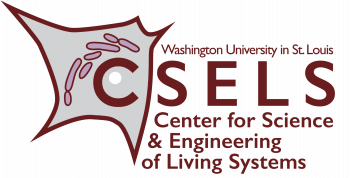
The Center for Science and Engineering of Living Systems (CSELS), is an interdisciplinary center that supports researchers from engineering and basic sciences who focus on the cell.

Cells are the smallest unit of living systems. They process and metabolize inputs, generate functional outputs, undergo division, adapt to stresses, evolve over time and influence decisions on the tissue level. The building blocks of cells are biomolecules and yet cells are more than just bags of molecules. Cellular matter is organized spatially and temporally and evolutionary changes are written into molecules over a period of time.
So how does a cell come to life, how do cells evolve, what known physical laws apply, what new physical laws need to be discovered, and how is the information written into biomolecules processed to give rise to a living cell? These are the questions that drive the Center for Science and Engineering of Living Systems (CSELS). Pronounced “cells,” the center brings together investigators from engineering and basic sciences for whom the cell is the fundamental unit of interest.
Our goals are to model, design and manipulate cells and cellular matter at multiple scales in order to understand how cellular level phenotypes come about as the result of coordinated, regulated, collective interactions at the sub-cellular and extra-cellular levels. This will require innovations in technology and computation; it will also enable engineering and design and the single cell, single molecule and all scales in between. Innovations and insights generated through synergies among CSELS members are leading to technological advances and a better understanding of cellular level phenotypes that have an impact on modeling complex diseases and the development of novel materials based on active living matter.